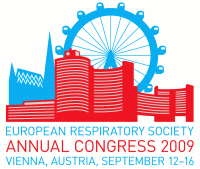
|
E-communication : P3547
Imaging patterns of bacterial community acquired pneumonia in moderately immunocompromised patientsPresenting author : ZORICA MilosevicAuthors : |
Purpose: Imaging pattern of severe bacterial community acquired pneumonia (CAP) in moderately immunocompromised patients was analyzed.
Methods and materials: In 42 patients (29 males and 13 females; 55,3 ± 14,7 yrs; 64% smokers, 60% diabetics and those with COPD) with severe CAP, plain chest films were performed and high resolution computed tomography (HRCT) in 11 pts. Causative microorganism in 9 pts was Streptococcus pneumoniae, Streptococcus α haemolyticus in 13 pts, Staphylococcus aureus in 5 pts, gram-negative bacteria in 15 pts (Pseudomonas, E.coli and Klebsiella, equally represented). Statistical significance was tested by Chi-Square Test (level p<0,05).
Results: Lobar pneumonia was found in 64%, bronchopneumonia in 31% and focal pneumonia in 5% of the patients, without significant difference regarding causative factor (p=0,06). In the patients with lobar pneumonia upper lobe was affected in 57%, lower lobe in 30% and middle in 13%. Pleural effusion was noted in 38%, lung abscesses in 7%. Pleural effusion was not associated with Staphylococcus aureus pneumonia, abscess formation was feature of Streptococcus α haemolyticus and Staphylococcus aureus pneumonia (p=0,01). Complications and multisegmental lung involvement were detectable 7 days earlier using HRCT than plain chest film.
Conclusion: The most frequent imaging pattern of severe bacterial CAP in moderately immunocompromised patients is upper lobe pneumonia, irrespective of causative factor. Cavitation is the feature of Staphylococcus aureus pneumonia (without pleural effusion) or Streptococcus α haemolyticus pneumonia (with pleural effusion). HRCT is recommended for early detection of complications and progression of pneumonia.

19th ERS Annual Congress - September 12-16, 2009
Copyright 2009